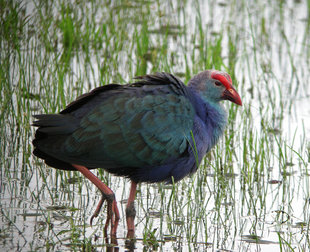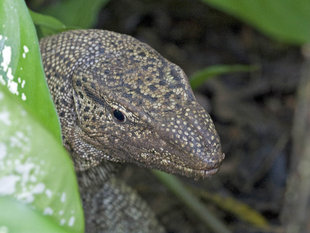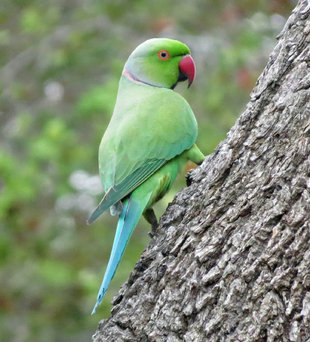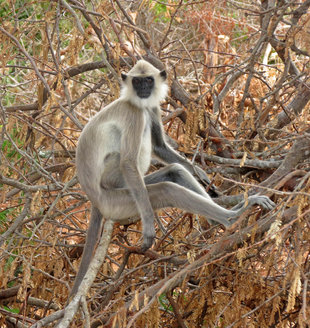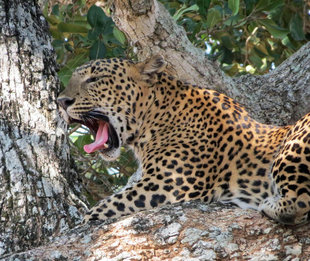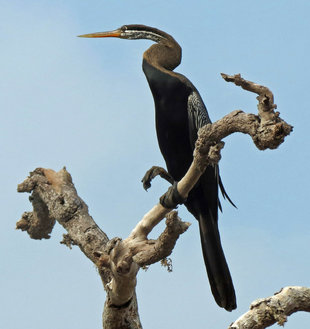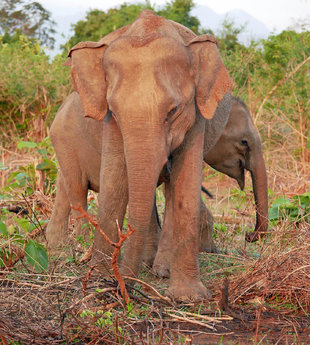Famed for its population of extrovert leopards and wild elephants, Sri Lanka's Yala National Park is considered by many conservationists and eco-tourists to be one of the finest protected areas in Southern Asia. Yala, now covering around 979 square kilometres on Sri Lanka's SE coastal plain is one of the country's oldest protected areas, was first designated as the 'wildlife sanctuary' in 1900.
Visiting the park now, it is easy to see why this Yala is regarded so highly. The area now sits in a larger network of reserves and is an incredible haven of bio-diversity with many distinct habitats found in the park. Much of the park consists of relatively dry grasslands, scrub and monsoon forests, but the park is also famed for its inland wetlands and unique coastal mangrove forests and dunes. The inland wetlands are superb areas for bird watching and with the rivers flowing from the interior, magnets for wildlife in the dry season. A meeting point of wilderness land and sea, Yala is a natural Aqua-Firma location. Although coastal areas were affected by the 2004 Indian Ocean Tsunami with 250 people being killed in Yala and other localized coastal areas, overall little has changed here since it was first viewed by Spanish Explorer Cipriano Sanchez in 1560.
Yala boasts the highest density of Sri Lankan Leopards (a separate subspecies) on the island and perhaps worldwide. In some areas in Yala leopards are estimated to exist in a density of around 1 cat per square kilometre, which is a remarkable number. With no tigers for competition, Sri Lankan leopards are the island's dominant big cat and appear much more confident in the open in comparison to their Indian relatives. It would be unfair to focus too much on the park's leopards though, as there are 43 other species of mammals who call the park home. More than 300 Asian elephants live in the Yala, although they sometimes roam outside the park in search of food and water. The rare sloth bear is another resident that can sometimes be seen here, especially in June and July when fruiting palu trees bring bears into the open. Langur monkeys, golden jackals, water buffalos, slender loris, toque macaques and the small and elusive fishing cat are other remarkable creatures sometimes seen at Yala.
With 220 bird species inhabiting Yala in areas varying from moist monsoon forests to scrub, grasslands and seasonal lagoons, this is rich territory for bird watching. Wetlands are favoured by species like lesser and greater flamingos, pelicans and white-bellied sea eagles, whilst densely forested areas provide homes for hornbills, crested serpent eagles and Sri Lanka jungle fowl.
Before taking a dip on the coast's attractive rivers and wetlands, bear in mind that Yala hosts both species of Sri Lankan Crocodile: the fresh water mugger and salt water crocodiles (the planet's largest species) live here. All 5 sea turtles (leatherback, olive ridley, loggerhead, hawksbill and green turtle) also grace the protected area's mangroves, beaches and estuaries - another jewel in the crown of a remarkable area. The Yala National Park is Sri Lanka's most popular reserve and if you can only visit one park in Sri Lanka and wildlife viewing is a priority, Yala is an excellent choice.
Sri Lanka - adventure - responsible travel - eco tour - vacation - holiday - tented camp - safari - accommodation & hotel - birding - rainforest - savanna

